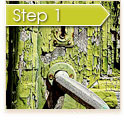Ok, I just got this email from Jason Gilbert of SOCALCIA which was sent to him by the one and only Bruce Norris of The Norris Group.
From: Bruce Norris
Sent: Thursday, June 11, 2009 7:04 AM
To: Jason Gilbert
Subject: RE: Contrarian Activity ChartedHi Jason,
What’s about to hit California will be very damaging. There are 240,000 properties currently in some stage of foreclosure process, 900,000 owners have stopped making their payments and 3 million California homeowners are under water. The next 18 months will see the sale of a lifetime on California real estate.
We have one student who is concentrating on condos. At the peak, this condo built in 2005, went for $300,000. He just bought it for $31,000. It rents for $1,100.
Bruce
————————
INVESTORS: You HEARD Bruce . . . If you don’t act NOW, you will miss out on the “Sale of a lifetime on CA real estate”! The BEST place to get these deals will be revealed at our next meeting, so for details visit www.socalcia.com
So… I went on ForeclosureRadar.com and checked out the Bank Owned inventory. Here are the Maps for San Diego Bank Owned Foreclosures and for North County Bank Owned Foreclosures. They show a total of 3748.
To get through this San Diego Real Estate Fiasco we need to purge the system of this “shadow inventory” of foreclosed homes. The California Foreclosure Prevention Act that was signed last Feburary by Gov. Schwarzenegger was supposed to slow things down even further, but it seems that many of the “major player” banks have received immuity from this new moratorium on foreclosing. Click Here for a good article from the SacBee on this topic.
The time is coming for a landslide of killer deals on California and San Diego Real Estate.
You need a seasoned real estate team that will help you cash in on the opportunities as they appear.
Contact Us Today.





 Posted by Travis Houston
Posted by Travis Houston 






You must be logged in to post a comment.